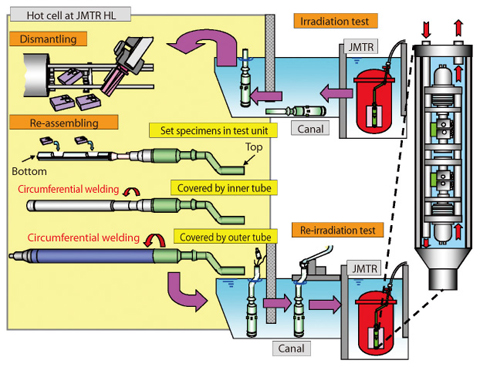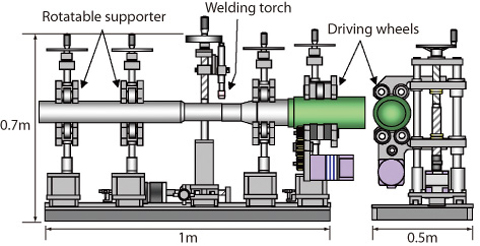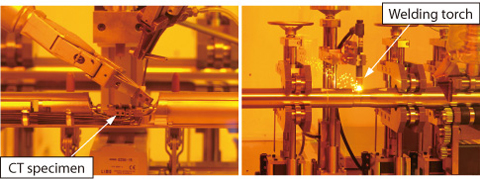
Fig.12-10 Flow image of re-irradiation test

Fig.12-11 Schematic drawing of welding apparatus

Fig.12-12 Photographs of assembling work of the IASCC test capsule in hot cell
Since the Hot Laboratory of Japan Materials Testing Reactor (JMTR HL) has an advantage that its No.1 concrete cell is connected with "JMTR" by a canal pool, it is easy to transport a re-assembled capsule containing previously irradiated specimens from the hot cell to "JMTR" through the canal for re-irradiation tests (Fig.12-10). This advantageous feature was used to investigate the behavior of irradiation assisted stress corrosion cracking (IASCC) caused by the simultaneous effects of neutron irradiation and high temperature water environment in Light Water Reactors (LWRs). Crack growth tests and unified constant load tests of irradiated specimens were performed using in-pile IASCC test capsules in "JMTR" . The development of techniques for remotely installing irradiated specimens in this capsule and then welding capsule tubes in the hot cell is essential for these tests.
The in-pile IASCC test capsule is 3 m in length and is bent at its upper part. It also consists of inner and outer tubes made of stainless steel. The inner tube is 3 mm in thickness for strength against pressure.
The remote welding technique that the welding torch moves along the capsule tube's surface circumferentially had been developed in JMTR HL for assembling the coupling capsules. When this technique was applied to the welding for a butt joint of the inner and outer tubes of the in-pile IASCC test capsule, flaws like craters were observed in the weld beads on the outside surface of the tube. Therefore, a new remote-welding technique had to be developed for assembling the long and bent in-pile IASCC test capsule. We manufactured a new remote-controlled welding apparatus whose torch was fixed right over the tube and which rotates the capsule tube. The apparatus has the welding torch, the driving wheels, and rotatable supporters (Fig.12-11).
The techniques to perform a pressure test, helium leak test and liquid penetrant test remotely in the hot cell were also established to evaluate the integrity of the assembled capsule and were applied in the final inspection before the re-irradiation test in "JMTR". Eight in-pile IASCC test capsules containing irradiated specimens were remotely assembled in the hot cell (Fig.12-12) and their re-irradiation tests were done successfully. The data obtained by re-irradiation tests using in-pile IASCC test capsules is essential to investigate the mechanism of initiation and progress of IASCC in structural materials.